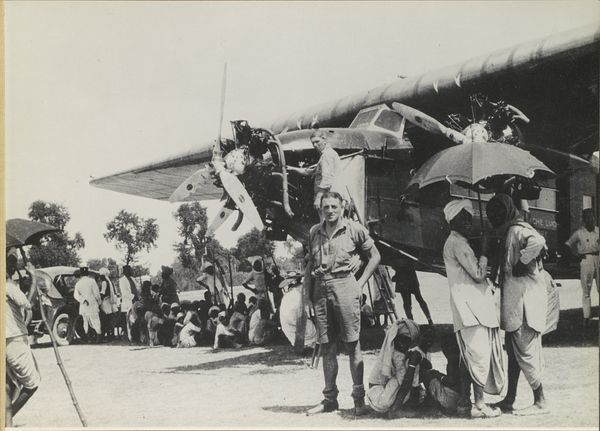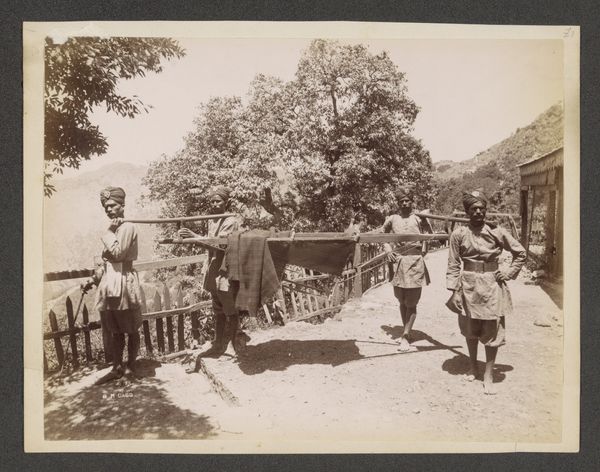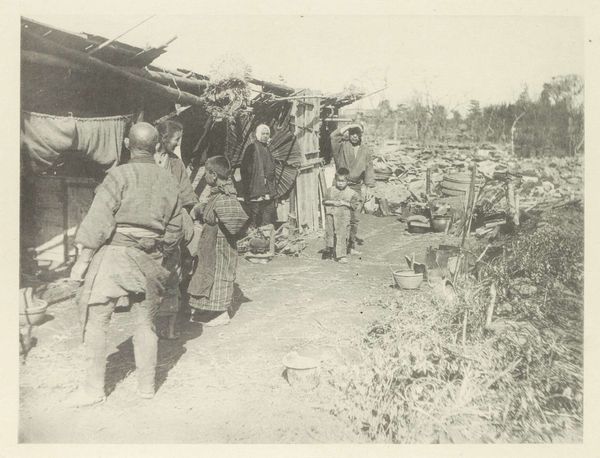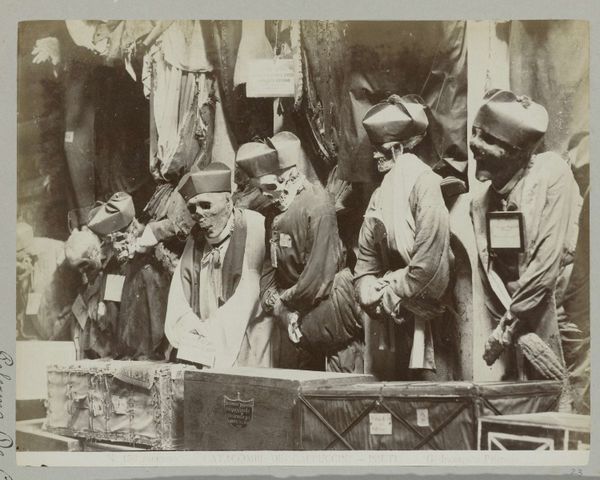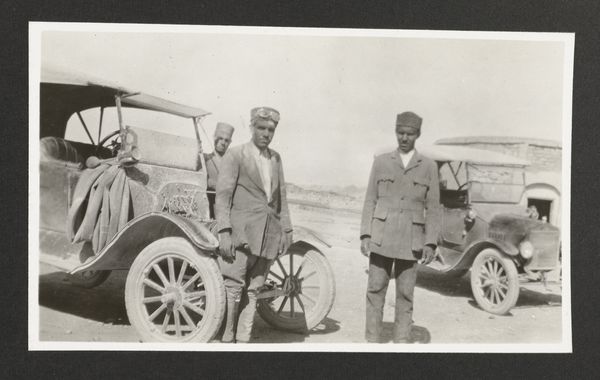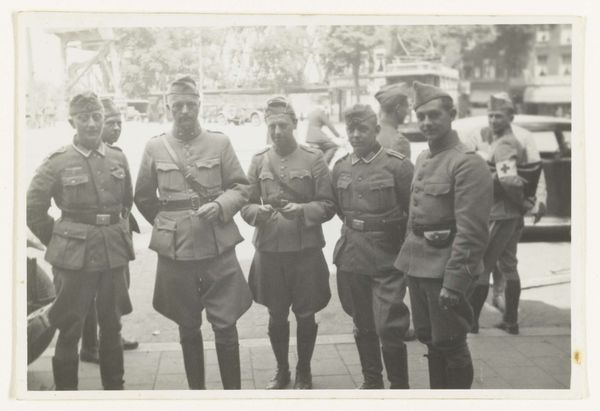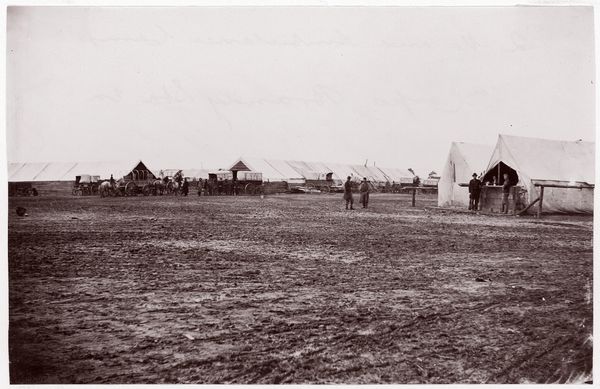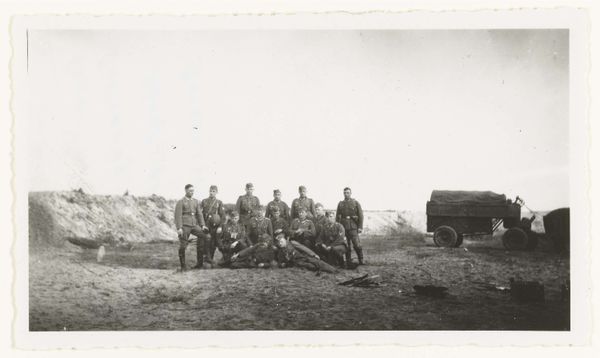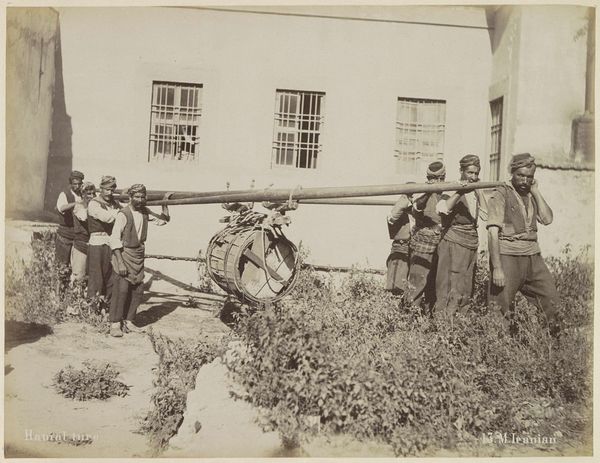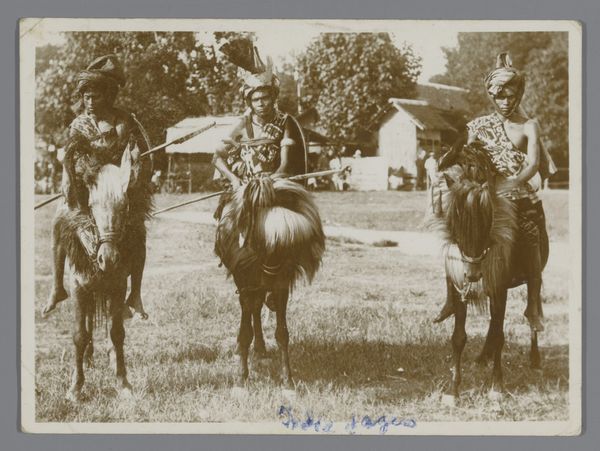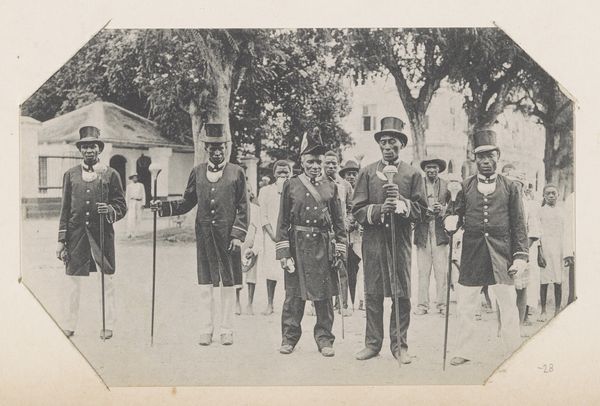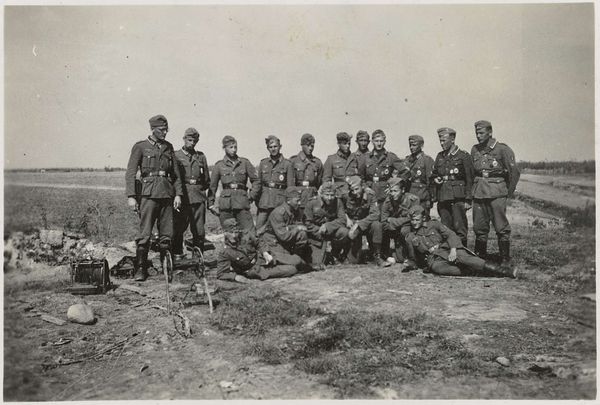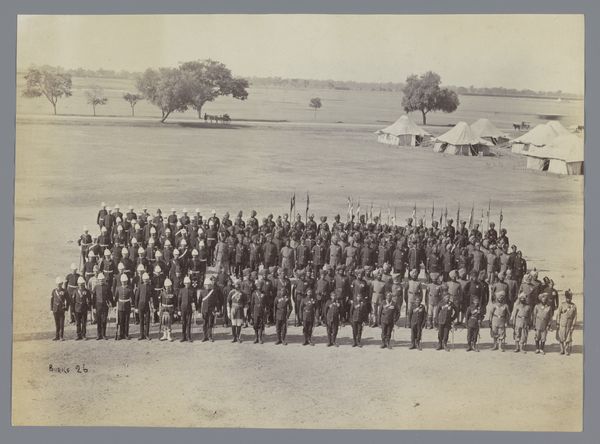
photography
#
portrait
#
still-life-photography
#
landscape
#
photography
#
historical photography
#
desaturated colour
#
orientalism
Dimensions: height 75 mm, width 126 mm, height 124 mm, width 184 mm
Copyright: Rijks Museum: Open Domain
Editor: Here we have "Perzische herberg te Rezan," or "Persian Inn at Rezan," possibly taken between 1925 and 1926 by A.G.A. van Eelde. It's a photograph that captures a group of people in what appears to be a Middle Eastern or Central Asian setting, and there’s even a car in the shot! I'm really struck by how this one image tells so many stories; there’s a collision of tradition and modernity happening. What draws your attention in this work? Curator: This photograph presents a fascinating intersection of technology and tradition, East and West. We see this through the contrast of the automobile and what looks to be an adobe building. This would have been a period in time where these technologies would have been more uncommon in some regions. Who owned that car? What goods did that building hold? And who consumed those? Editor: That's interesting. I hadn't considered the specific labor that went into producing the objects we see. Curator: Exactly. Let's consider the making of the photograph itself. What kind of camera was used? How was the film developed? The physical materials and the social context of their production and consumption are key to understanding its layered meaning. Editor: I never would have thought about photography in that way. How does the "Orientalism" tag relate to this image's materials and context? Curator: "Orientalism" implies a Western gaze on the East, which is pertinent here. Who is taking the picture and their biases, plays a huge role here, and so does where it will eventually be consumed and by whom. The photographic process itself – from camera to print – facilitated the spread of these perspectives, shaping Western understandings, and ultimately Western power over, the depicted cultures. Even this particular copy existing in this museum is indicative of this global flow. Editor: That's made me look at the photo from a totally different perspective, thinking about trade and power dynamics expressed in the physical elements in the shot, even down to the chemicals used to develop it! Curator: Precisely. Seeing the materials and their creation opens a deeper conversation than just the immediate image. It prompts us to think about the complex web of global connections.
Comments
No comments
Be the first to comment and join the conversation on the ultimate creative platform.
